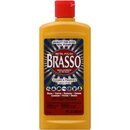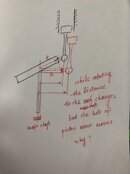I am losing air back to the 2nd stage, so something isn't right. I'm assuming that the dirty head is causing
Rob we need to break this down part by part too much flak.
1. Loosing high pressure air from the 3rd stage back to the second is caused by the reed valve lifting. Now my guess is you used the old reed valves but didn't swap them around old inlet for outlet old outlet to inlet.
That way the pre lift on the inner leaf of the reed valve is now upside-down and sealing solid on the valve itself.
2. Lap the valve itself wet and dry on a glass sheet for flatness with say Brasso if it looks good or wet and dry 600 grit if the valve itself its a bit manky
Clean the Brasso off real good before using again.
3. The cheap trick test is when shutting the compressor off under pressure bleed the 2nd stage separator then close the bleed valve and count 10 seconds then bleed again. A judgement call is needed as to how much gas bleeds by the 3rd stage reed valve and a good indication of "lift" on the reed lip,





